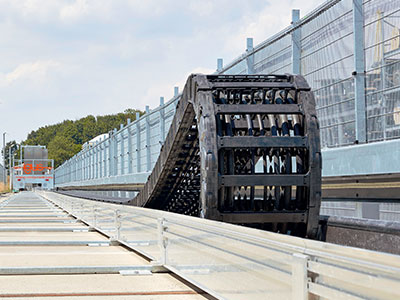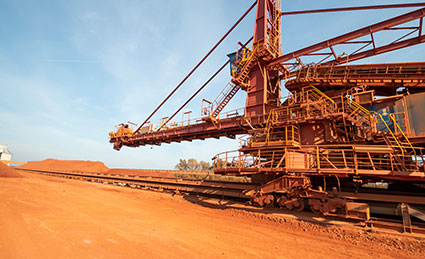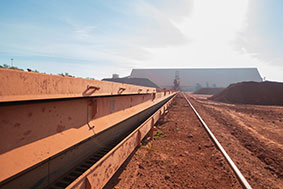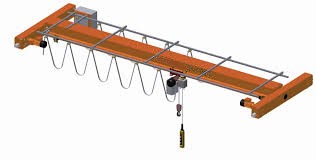Goodbye to space problems: how to guide cables in limited installation spaces
Marco Thull | 1. September 2020
Guide cables and hoses safely in limited installation space without rapid fatigue fractures that lead to expensive downtime: an ultimate discipline! The possibilities offered by compact energy chains and highly flexible cables.
Building a house in the country, on a 1,000m2 plot: no problem. It gets trickier in a 200m2 small gap in a big city. Here, strategic thinking is required to make the best possible use of space. The situation is similar for industrial machines, plants and robots. Their number is increasing in the automation era. And space at the application site becomes more valuable. At the same time, the requirements for dependability are increasing. This presents designers with new challenges – also in the guidance of cables and hoses. The answer is compact and modular energy chains and matching cables for highly flexible applications.
Crane systems: save up to 85% installation space with e-chains
Crane systems can be made more compact with the igus energy chains. Until now, many of these load carriers have been working with festoons – with cable trolley systems in which the energy and data cables follow the trolley along the crane jib. As on a curtain rod, loops are formed that require space. The average installation height of festoons is around 3,000mm.

Other crane systems work with motorised drums that wind and unwind cables synchronously with the movement of the trolley. They have – depending on the travel – a diameter of up to eight metres. Space is also required for the motor and slip ring body. In both cases, operators can save space. How?

This is where e-chains from igus come into play, which are more compact than festoons or motorised drums. If the chain folds, the upper and lower run reach a height of around 800mm. This saves the operator around 75 per cent installation space compared to an average cable trolley system. In addition, the cable station and 10% of the steel construction is eliminated. Compared to the motorised drum, the space saving is up to 85 per cent.

“I would always use igus energy chains!”
In the meantime, e-chains are used in a correspondingly large number of indoor and outdoor crane systems. “Less maintenance expenditure, greater availability, the possibility of guiding all different cables and hoses in a single system, electronic Push/Pull Detection System – all these benefits have fully convinced us of the advantages of igus products”, says Fabian Wilhelm, Head of Electrical Power Engineering at Aluminium Oxid Stade GmbH (AOS). “I would always use igus energy chains.” “

However, e-chains are not only found in huge crane systems. Designers in almost all industries use the space-saving energy supply systems made of light and wear-resistant high-performance polymers – from medical technology to aviation and the food industry.
With compact control cables save 20% installation space
How compact an e-chain can be depends on the filling as well – on the diameter of the cables inside. Therefore, igus is making efforts to reduce the outer diameter of cables. The control cables of the chainflex series achieve this by using a thin TPE insulation. An example: if a customer uses a CF5 cable with PVC jacket, he can save about 20% installation space by switching to the CF98 control cable with TPE outer jacket. And yet the cables are tough. This is demonstrated by long-term tests in the company’s own 3,800m2 large test laboratory, which allow reliable predictions about the service life of the cables. This also explains why igus gives customers an above-average guarantee of 36 months.

If e-chains are very compact, the cables inside must allow small bend radii. The challenge: if the bend radius is less than five times the outer diameter of the cable (5xd), a classic cable material like copper reaches its physical limits under long-term stress. In its development work, igus is therefore focusing not only on reducing the outer diameter of the cables, but also on finding suitable conductor materials and innovative conductor designs. These cables include the chainflex control cable CF98. The high-strength special alloy with a softer molecular structure and cores wound in layers with a very short pitch length, means that the cable can withstand even small bend radii of 4xd under continuous load.
Tested and proven in practice
Among others, the control cable is used by Hamburger Hochbahn AG. The company uses the cables for trap detection in the passenger doors of its tube trains. Each year, the cables have to survive around 50,000 locking operations. In the case of copper-based cables, wear problems occurred after six months of use. The CF98 control cable, on the other hand, mastered 450,000 door cycles during test rig trials without error messages. Hamburger Hochbahn AG is expecting a damage-free service life of at least 20 years.

Tech up, Cost down. Now more than ever
As per the motto: “Tech up, Cost down”, we will support you in finding the most cost-effective solution that will work for sure. Because only this solution is really the best!
More tips on “Tech up, Cost down” online at www.igus.eu/tucd


